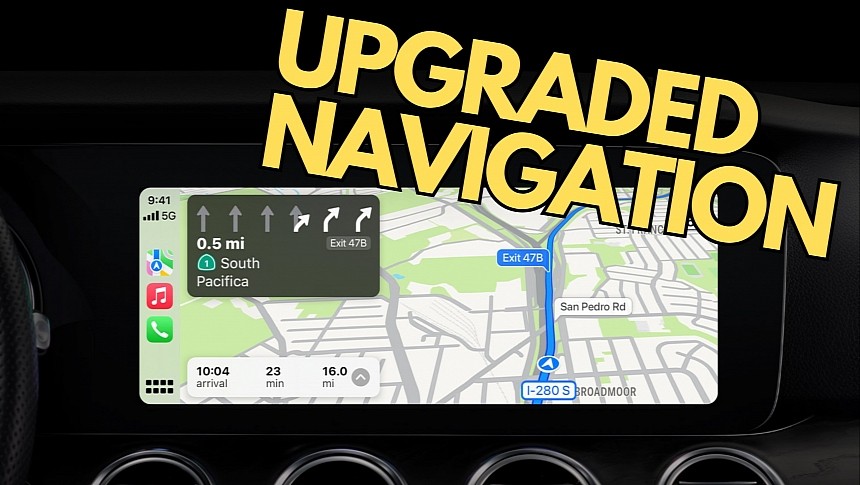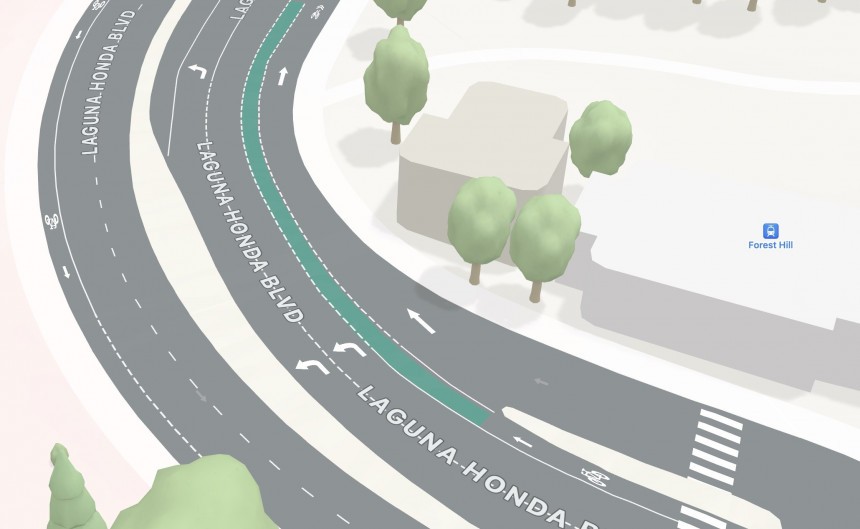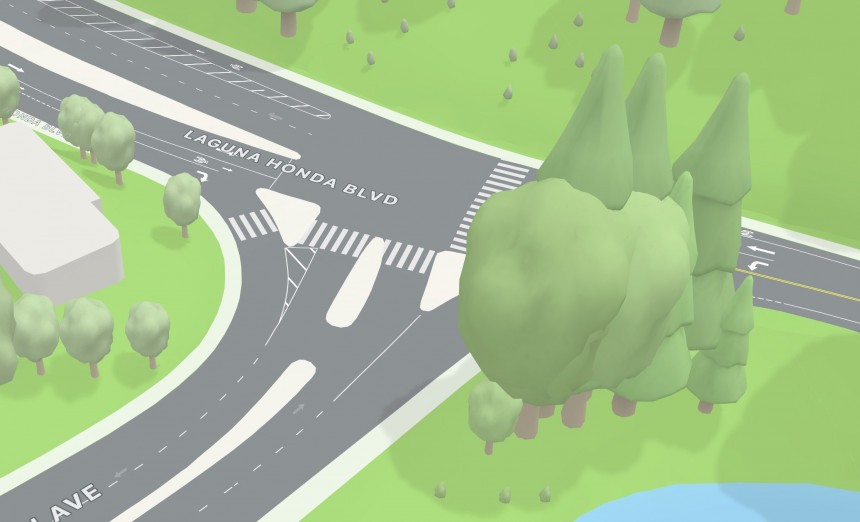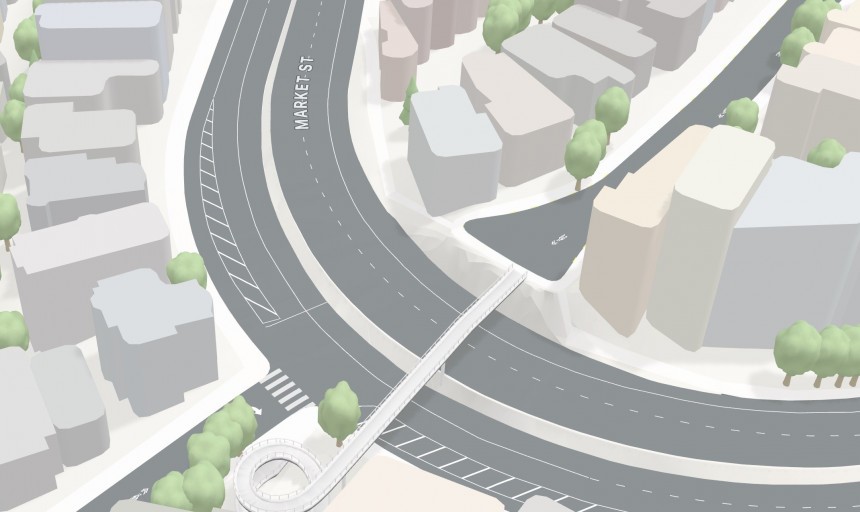There was a time when Apple Maps was considered a horrible navigation solution, as its bad map data regularly directed users to the middle of nowhere.
Google Maps rapidly became a top alternative despite Apple Maps being offered as the native navigation choice on Apple devices. Waze also gained ground in the iOS ecosystem, eventually becoming a replacement for Apple Maps for users who were particularly interested in traffic navigation.
The last few years brought significant upgrades to Apple Maps, bringing it closer to Google Maps in terms of functionality. The detailed city experience, still rolling out to users worldwide, includes Apple's new maps, with incredible attention to detail, including sidewalks, crosswalks, trees, buildings, and 3D landmarks.
Apple Maps also upgrades the navigation experience with more data, including stop signs and traffic lights. But the feature that completely upgrades the navigation experience is the Siri Natural Language Guidance.
If you have used Apple Maps before, you probably know already that the application used to work like most other sat-nav solutions, offering turn-by-turn directions when navigation was active. Apple Maps uses voice guidance to tell users which way to go.
However, Apple decided to change the basic instructions offered to users and upgrade to what the company describes as natural language. The guidance provided by Apple Maps now makes more sense and includes additional details, so following a suggested route is significantly easier.
Here's how it works.
Navigation apps offer turn-by-turn directions in two ways. The first is the on-screen arrows that indicate the next turn. Google Maps, Waze, Apple Maps, and all the other navigation apps work similarly, highlighting the route on the map and showing a banner with the distance to the next turn and the direction you must follow.
While I prefer keeping voice navigation disabled, especially when using a familiar route, looking at the screen regularly is a big no-no. The process only increases the driver's distraction. It's where the voice navigation comes into play, as the application also offers audio instructions on which way to go, so the driver doesn't have to look at the screen when the vehicle is in motion.
The first time I used a sat-nav was nearly two decades ago when a dedicated GPS navigator was in charge of getting me to the destination on an unfamiliar route. The voice guidance was basic and sometimes brutal, telling me to "turn left in 100 meters."
In a city with several left turns approaching, figuring out which way you need to go is quite a challenge. I still encounter the same problem when I use Waze, as the application uses secondary streets as shortcuts, trying to find a faster route to the destination.
Things haven't changed much, so most navigation apps still offer these bland instructions lacking context. The natural language integrated into the new Apple Maps addresses this shortcoming.
While the new-gen Apple Maps experience isn't yet available in my hometown, I recently got the chance to try out the application in a region where the detailed city experience is live. I'm telling you, the navigation engine is so different that Apple Maps feels like a completely new product that can easily compete with Google Maps.
The guidance makes more sense now. Instead of a basic turn instruction that doesn't include additional details, Apple Maps now lets you know which way to go by providing more information according to the route. For example, instead of "turn left in 100 meters," Apple Maps could say something like "turn left in 100 meters after the traffic light."
On some occasions, Apple Maps also uses landmarks to make navigation even more straightforward. One of the instructions said, "Turn right after the Bank of America building," so the driver could easily tell which way to go without looking at the screen for additional information.
Apple Maps feels like a new-generation product that significantly reduces the distraction behind the wheel.
Navigation apps are supposed to make a trip from point A to point B more convenient, faster, and safer. They do this by making every minute spent behind the wheel more predictable, and the added convenience means you can easily find the route to a destination even when driving on unfamiliar roads. This Apple Maps upgrade is great, and I believe it'll become one of the features users love the most about the detailed city experience.
The obligatory warning: the detailed city experience isn't yet available worldwide, as Apple uses a painfully slow rollout process to enable the new maps. The release takes time, as the company is producing the new maps from scratch – Apple Maps no longer uses third-party data but maps based on information collected by the iPhone maker.
The availability expands to new regions regularly, typically once every few months, so fingers crossed for Apple Maps to enable the experience for everybody worldwide sooner rather than later. Once it happens, Apple Maps becomes a fully featured Google Maps alternative.
The last few years brought significant upgrades to Apple Maps, bringing it closer to Google Maps in terms of functionality. The detailed city experience, still rolling out to users worldwide, includes Apple's new maps, with incredible attention to detail, including sidewalks, crosswalks, trees, buildings, and 3D landmarks.
Apple Maps also upgrades the navigation experience with more data, including stop signs and traffic lights. But the feature that completely upgrades the navigation experience is the Siri Natural Language Guidance.
If you have used Apple Maps before, you probably know already that the application used to work like most other sat-nav solutions, offering turn-by-turn directions when navigation was active. Apple Maps uses voice guidance to tell users which way to go.
However, Apple decided to change the basic instructions offered to users and upgrade to what the company describes as natural language. The guidance provided by Apple Maps now makes more sense and includes additional details, so following a suggested route is significantly easier.
Navigation apps offer turn-by-turn directions in two ways. The first is the on-screen arrows that indicate the next turn. Google Maps, Waze, Apple Maps, and all the other navigation apps work similarly, highlighting the route on the map and showing a banner with the distance to the next turn and the direction you must follow.
While I prefer keeping voice navigation disabled, especially when using a familiar route, looking at the screen regularly is a big no-no. The process only increases the driver's distraction. It's where the voice navigation comes into play, as the application also offers audio instructions on which way to go, so the driver doesn't have to look at the screen when the vehicle is in motion.
The first time I used a sat-nav was nearly two decades ago when a dedicated GPS navigator was in charge of getting me to the destination on an unfamiliar route. The voice guidance was basic and sometimes brutal, telling me to "turn left in 100 meters."
Things haven't changed much, so most navigation apps still offer these bland instructions lacking context. The natural language integrated into the new Apple Maps addresses this shortcoming.
While the new-gen Apple Maps experience isn't yet available in my hometown, I recently got the chance to try out the application in a region where the detailed city experience is live. I'm telling you, the navigation engine is so different that Apple Maps feels like a completely new product that can easily compete with Google Maps.
The guidance makes more sense now. Instead of a basic turn instruction that doesn't include additional details, Apple Maps now lets you know which way to go by providing more information according to the route. For example, instead of "turn left in 100 meters," Apple Maps could say something like "turn left in 100 meters after the traffic light."
On some occasions, Apple Maps also uses landmarks to make navigation even more straightforward. One of the instructions said, "Turn right after the Bank of America building," so the driver could easily tell which way to go without looking at the screen for additional information.
Navigation apps are supposed to make a trip from point A to point B more convenient, faster, and safer. They do this by making every minute spent behind the wheel more predictable, and the added convenience means you can easily find the route to a destination even when driving on unfamiliar roads. This Apple Maps upgrade is great, and I believe it'll become one of the features users love the most about the detailed city experience.
The obligatory warning: the detailed city experience isn't yet available worldwide, as Apple uses a painfully slow rollout process to enable the new maps. The release takes time, as the company is producing the new maps from scratch – Apple Maps no longer uses third-party data but maps based on information collected by the iPhone maker.
The availability expands to new regions regularly, typically once every few months, so fingers crossed for Apple Maps to enable the experience for everybody worldwide sooner rather than later. Once it happens, Apple Maps becomes a fully featured Google Maps alternative.










